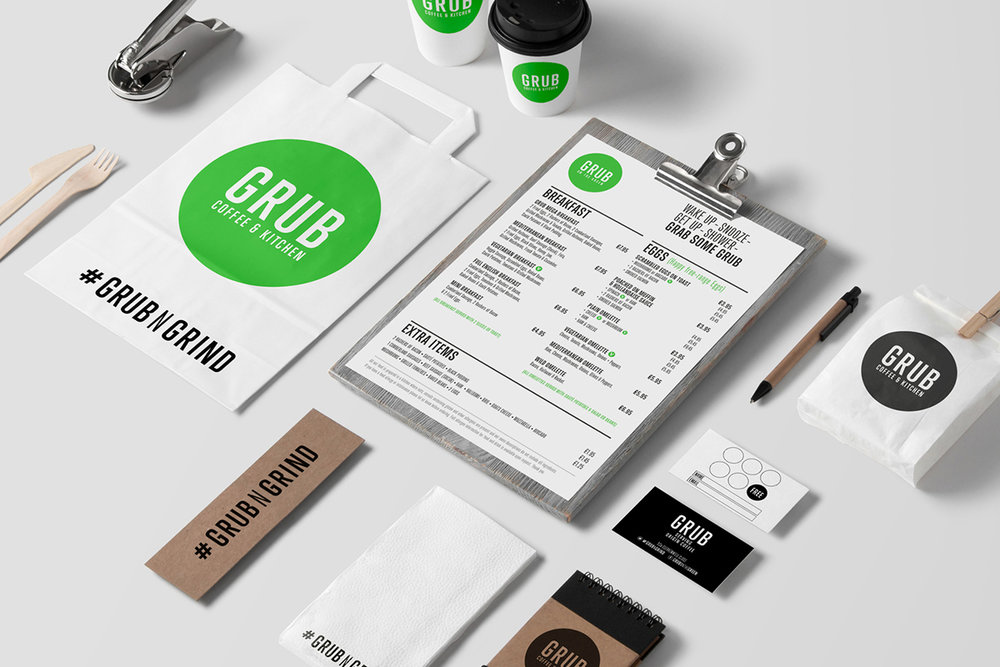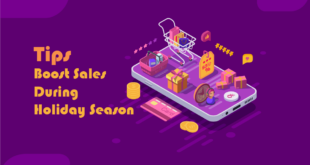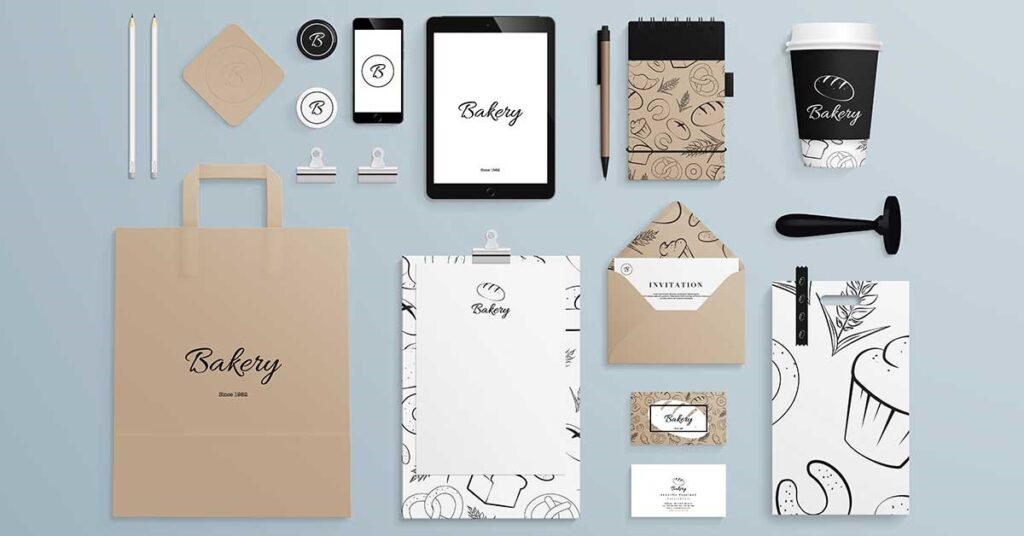
Have you ever heard about the “marketing materials” term, also called “promo materials”? We guess it’s no longer strange if you’re managing or working for a business, especially as a marketer. Because it’s one of the vital marketing types that many brands use to nurture potential customers through the buyer’s journey.
No matter how eminent your brand is, you will always have to approach different people with appropriate marketing collateral to encourage them to buy your products. Thus, it can help your business promote coverage, generate leads, and increase brand recognition.
This article will spell out the 15+ most popular promo materials that help increase your brand value. Accordingly, you can figure out how and when to use each type.
Table of contents
What Are Promo Materials?
We know this term may not be familiar to someone. So let’s take a few minutes to clarify its definition before scrolling down to the list.
Promo materials are items that businesses use to spread the word about their products/services to audiences. It is a kind of content marketing that ranges from digital content like e-magazines and slide decks to print materials like business cards, posters, and flyers.
These items are a handy way of reminding audiences to keep your products/services in mind and may also give your offerings a try in the future.
Why Do You Need Promo Materials?
You may be curious about what 15+ top-rated promo materials are. Of course, but let me explain some advantages to specify why they are essential first.
1. Boost Brand Recognition
Promo materials provide endless opportunities to present your brand with unique styles and color schemes. Therefore, people will be more likely to remember your brand’s distinctiveness.
You can often add appealing images of your products/services in your promo material. Hence, your customers can clearly realize what you offer.
This material is no longer just for marketing and sales. It also supports enhancing brand value for employee engagement and recruitment purposes.
2. Increase Sales
For sure, promo materials also help your company drive more sales. Once customers hold your marketing collateral with complete information about your company and your products, it makes it easier for them to decide to purchase. It’s also a good chance for people interested in your offerings to contact you and do business with you.
Moreover, this kind of material allows you to present your product/service descriptions in detail, which helps to encourage someone to buy. Because people tend to figure out product information to have an idea of them before making a decision. So if you provide customers with excellent marketing materials, increasing sales will be highly accessible.
On the other hand, marketing materials are used to share products or company information and present an exclusive offer to customers.
For example, in the upcoming grand opening, you can add your special offer to a poster or banner to attract people and convince them to buy your product at an affordable price.
15+ Promo Materials That Drive High Value for Business
1. Business Card
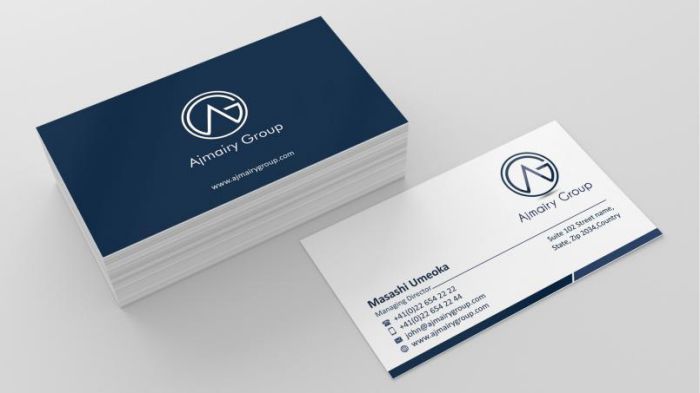
When mentioning a business card, we think it is quite familiar to you, right? It’s a small card that includes basic information about a business or individual, such as the name, address, contact number, email address, logo, and maybe social media handles.
Businesses often design this card with a logo and main color to show their uniqueness.
Besides handing out to prospective customers, businesses also get additional benefits from the business card expanding relationships with relevant vendors. As we all know, building community awareness is important to the company’s development.
Further, this item is portable, so business owners and professionals can put it into a bag or wallet. They are flexible to bring it everywhere, like events, trade shows, meetings, stores, or conferences. These places will open up endless opportunities to meet and make friends with people who work in the same market.
The business card also makes it easy for your contacts to store and get in touch with you in the future.
On the other hand, instead of saying hello or exchanging phone numbers only, prepare and give others a card to boost your company’s professionalism.
Let’s take a look at the following business card examples to learn how some vendors design their cards:
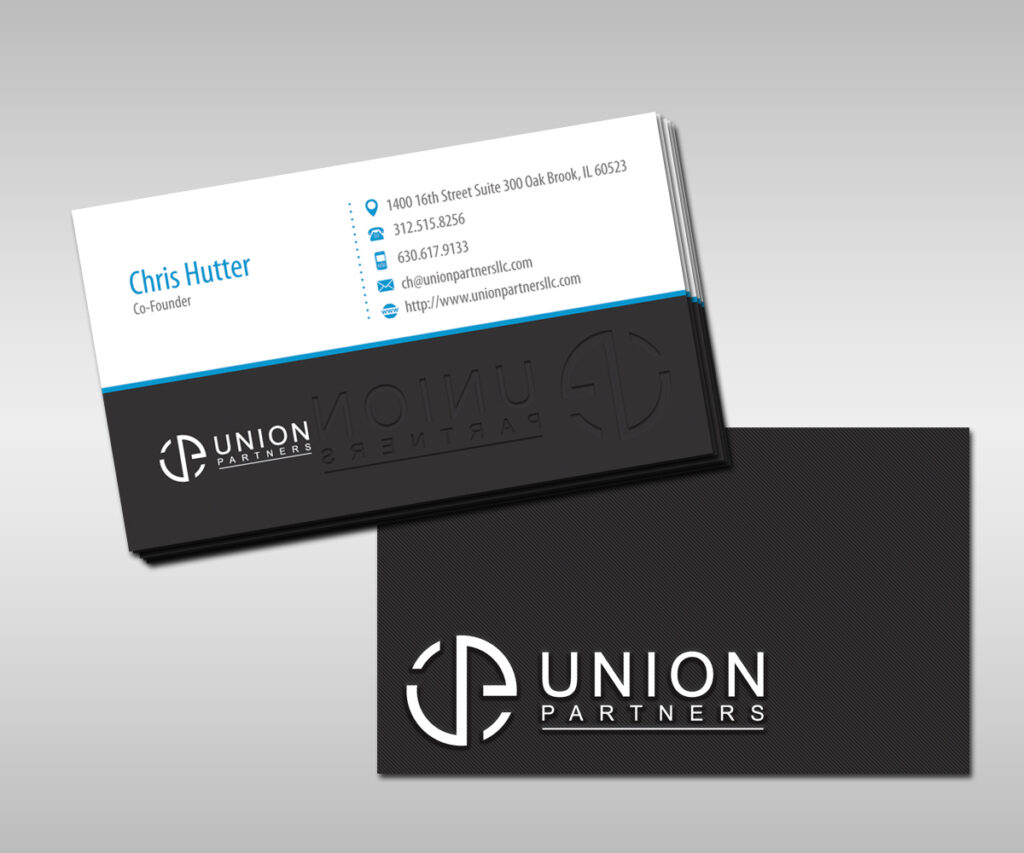
This business card includes all the essential information a card needs. They are the company’s name and address, phone number, email address, website, logo, and founder’s name. In addition, its design comes in a combination of black, white, and blue colors.
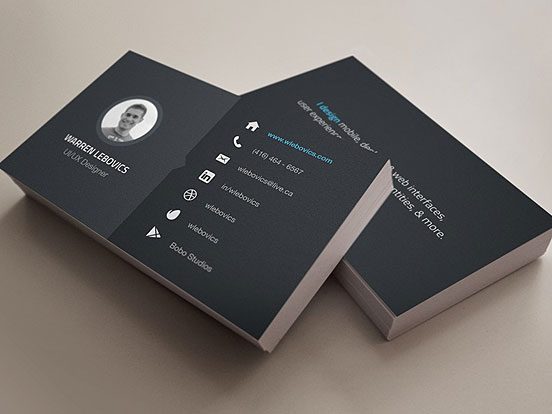
This example shows that this card’s owner may be a freelancer because it doesn’t show the company’s name where he works. This card’s distinction presents a LinkedIn profile picture and social media handle compared to the above example.
2. Poster
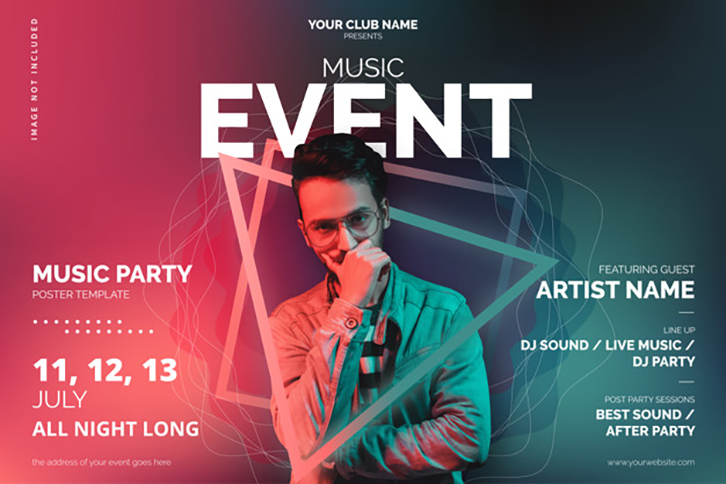
The following promo material is a poster. Its size is quite large and generally performed under a vertical rectangle form. It usually consists of just a few details about a company, initiative, special event, or craft an irresistible offer. Due to the word limit, the messages in the poster need to focus on how your business serves customers.
This item is most displayed at places where people gather, like stations, events, pavement, shopping centers, etc. Besides, your posters should have well-designed to make a splash, as people usually pay attention to visual elements first.
If you can design an elegant poster, you can share your information with many people instead of printing many other items. Hence, your business can save an amount of money. What a beneficial material, isn’t it?
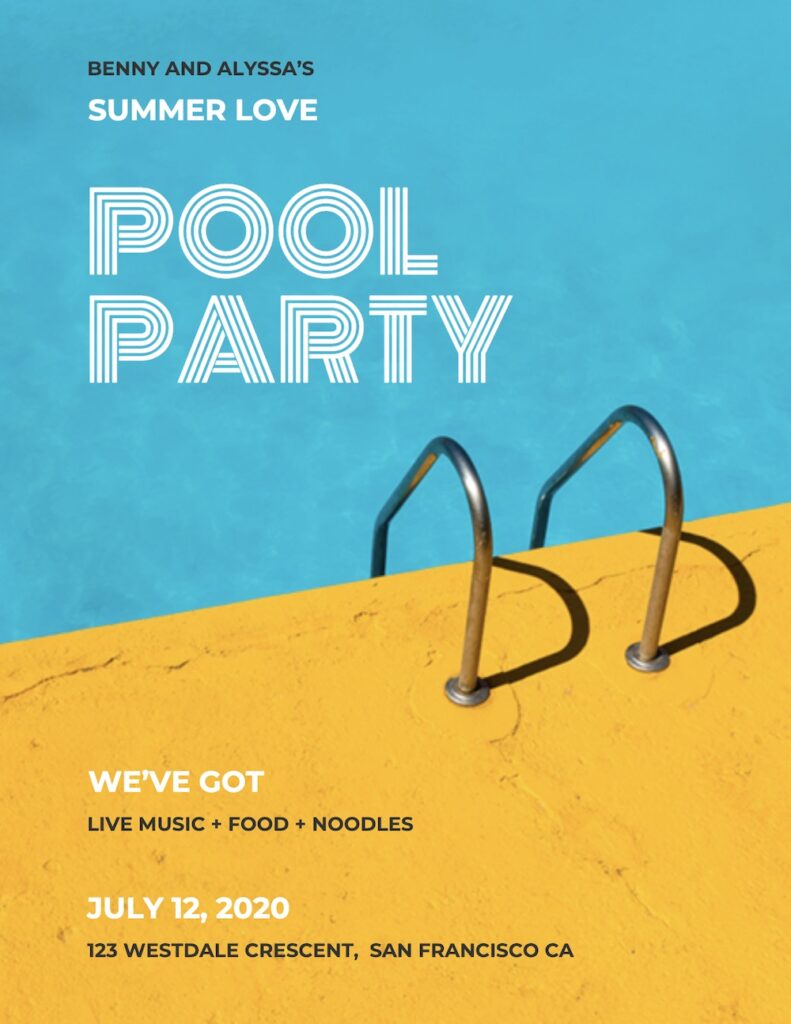
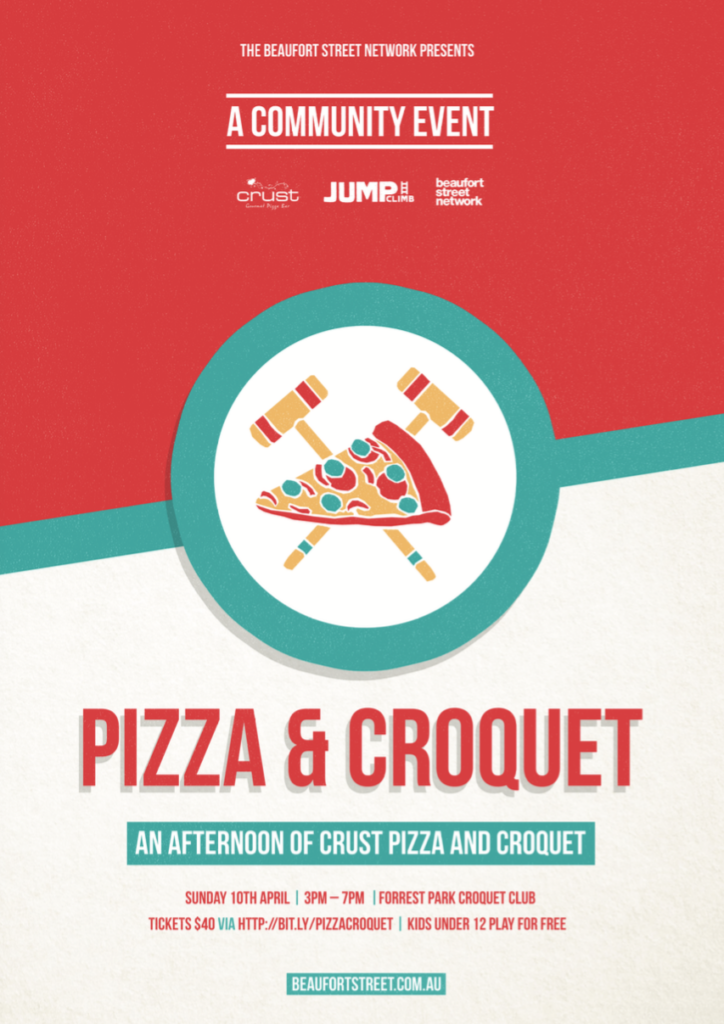
As you can see, both posters present just a few details about their events. They only focus on the event’s title, active time, address, general requirements, and the host. We think these details are enough when presenting a poster, and you may add other information, such as a logo or special offer if available.
On the other hand, these two also mix colors well, using contrasting colors between the background and text to highlight messages. Moreover, they use bright background colors, so people are more likely to pay attention to them.
3. Brochures
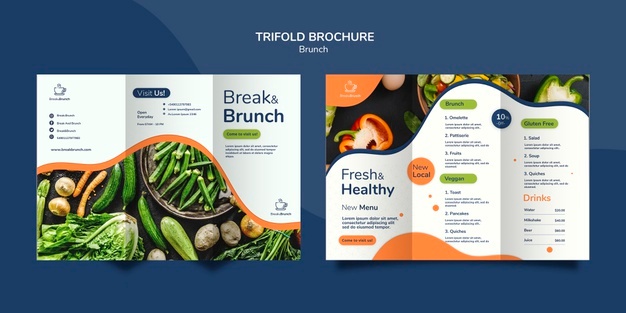
A brochure is ideal if you’re finding a document to explain your products/services or company in more detail. This promo material allows much more space for you to describe information than a business card. In addition, it can contain both text and visual elements to provide a cohesive look to customers.
The brochure is also flexible and convenient for storage and transportation because you can fold it into a pamphlet or leaflet.
Businesses often hand it out to customers or other vendors at meetings, trade shows, and reception or send it through the post office.
Your brochure should highlight all details about your business according to your brand design.
Additionally, call-to-action information like email, phone number, and website URL need to be included across the bottom so customers can quickly contact you.
Also, adding attractive images is extremely important in this task, but your photos must be reliable to build customer trust.
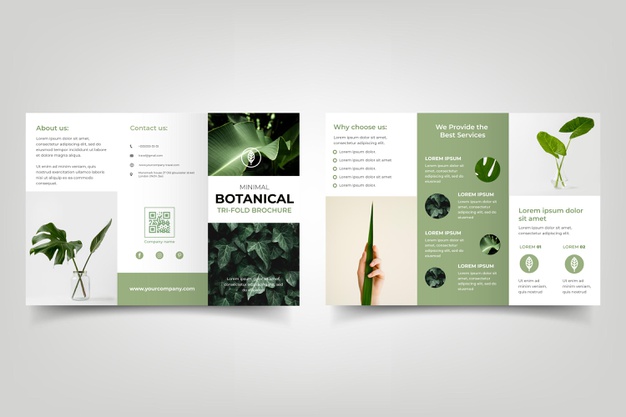
What can you learn after seeing this brochure example? The brochure’s layout is arranged logically.
They put the contact information at the back of the brochure and show customers attention-grabbing headlines, service explanations, and relevant images on the front. So customers can quickly scan what this brand provides and how to contact them if they have demands.
Especially they use green as the primary color that matches their offering – “Botanical.”
4. Mailers
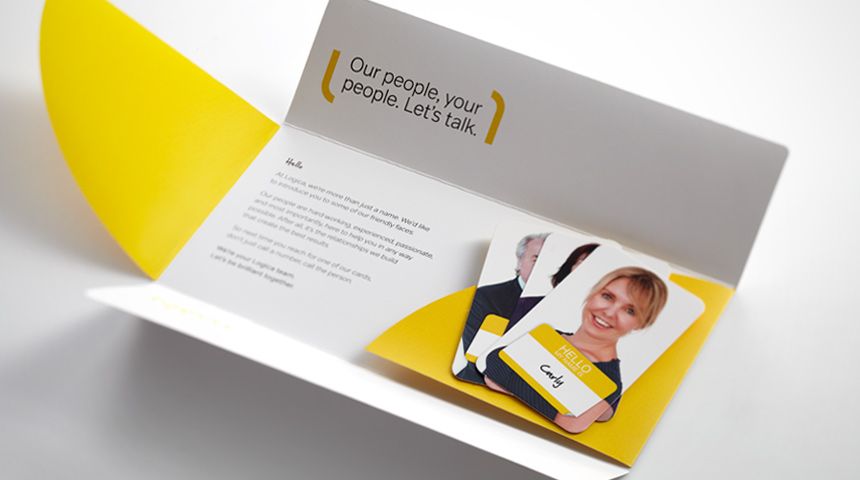
Mailers are printed items generally used to reach specific customer groups by directly sending them to particular demographics. Like other marketing materials, they also contain the company name, contact info, and essential details about the product/service. Besides, you can add an exclusive coupon if your business has a special offer.
Because this material mainly targets certain customer groups, your brand needs to segment and specify which potential audiences you want to reach. Therefore, you can maximize their advantages. Once you have your list, you can personalize the mailer’s messages based on their area, gender, industry, or other factors.
Then your mailers will be shipped to their address, so they will likely take notice of your business and save your info when needed.
Not only for potential customers, but you can also send this item to other companies if they demand cooperation.
You can learn the design of the following mailers for future documents:
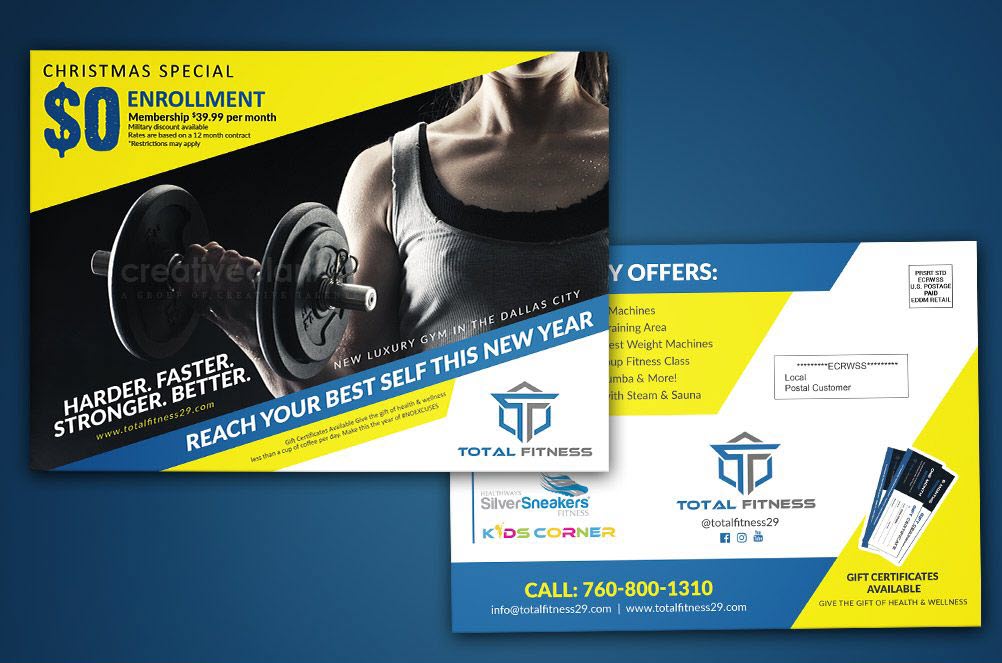
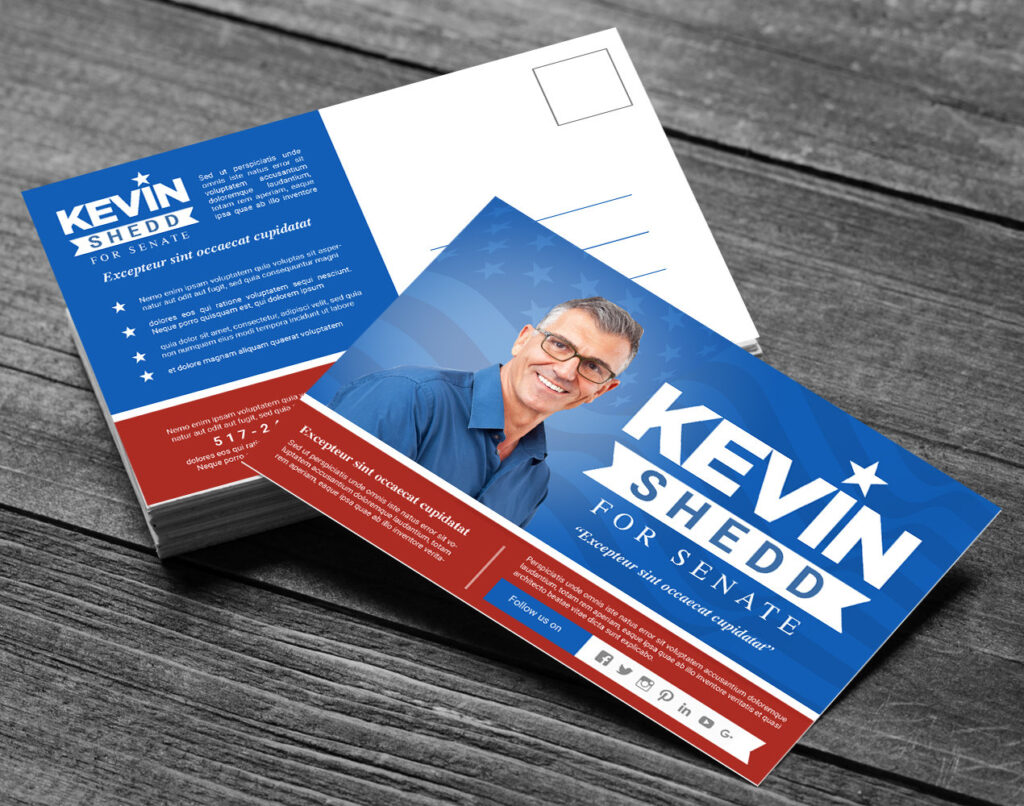
5. Outdoor Signs
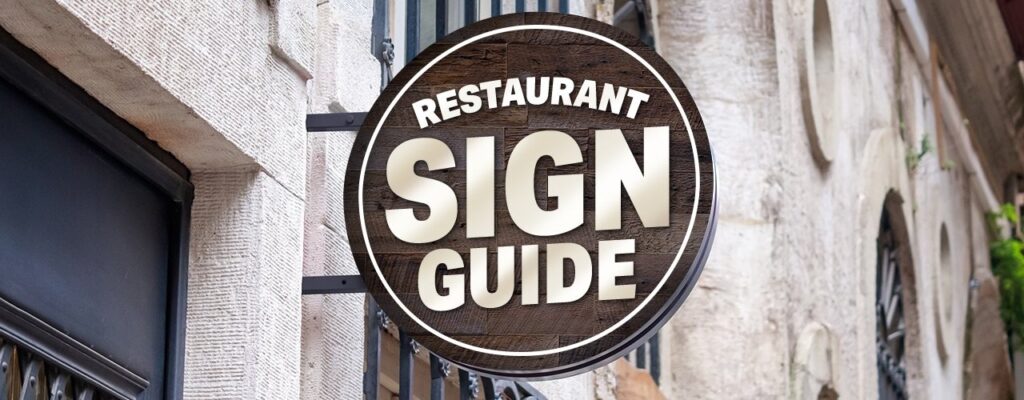
Outdoor signs are also considered promo materials. As posters, they encompass a few fundamental business info such as a logo, brand name, address, or special deals.
Brands typically place these items in front of a business, house, or public spaces (bus stop, station, street, park, etc.). They are often favored for promoting upcoming events and campaigns or being used as a signage board.
Using outdoor signs to share information about events, campaigns, or the company, your business draws people’s attention and increases awareness.
If people see your outdoor sign on the street or at their accommodation, they will be curious about your message and may remember you.
What’s more, you should make the text short, readable, and colorful visuals to take advantage of these materials.
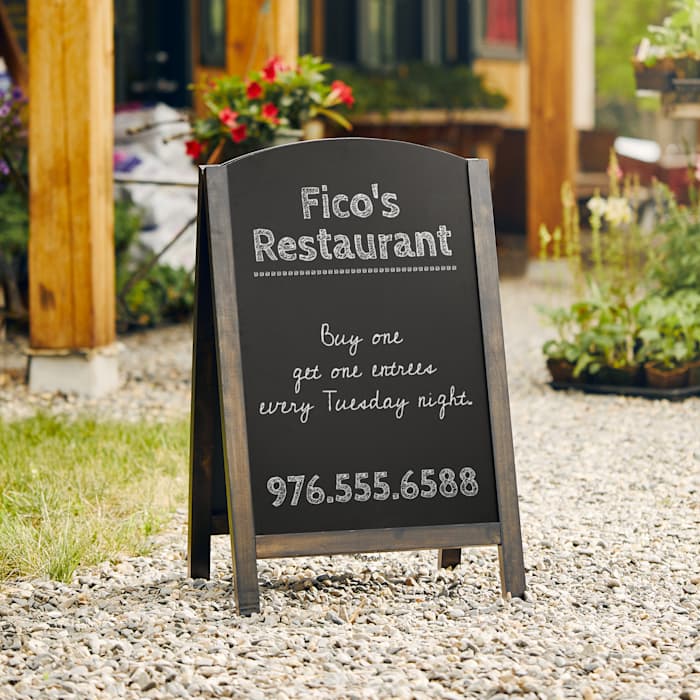
As you can see, this signage tells customers about their special offers every Tuesday night. The restaurant only provides necessary information like contact numbers to customers booked in advance and what they offer.
With two basic colors – black and white, Fico’s outdoor sign still looks modern and attractive because it highlights the main content.

If the above outdoor sign shares a special deal, this one acts as a signage board. It shows people where to go to the real estate office and provides the phone number to contact.
6. Catalogs
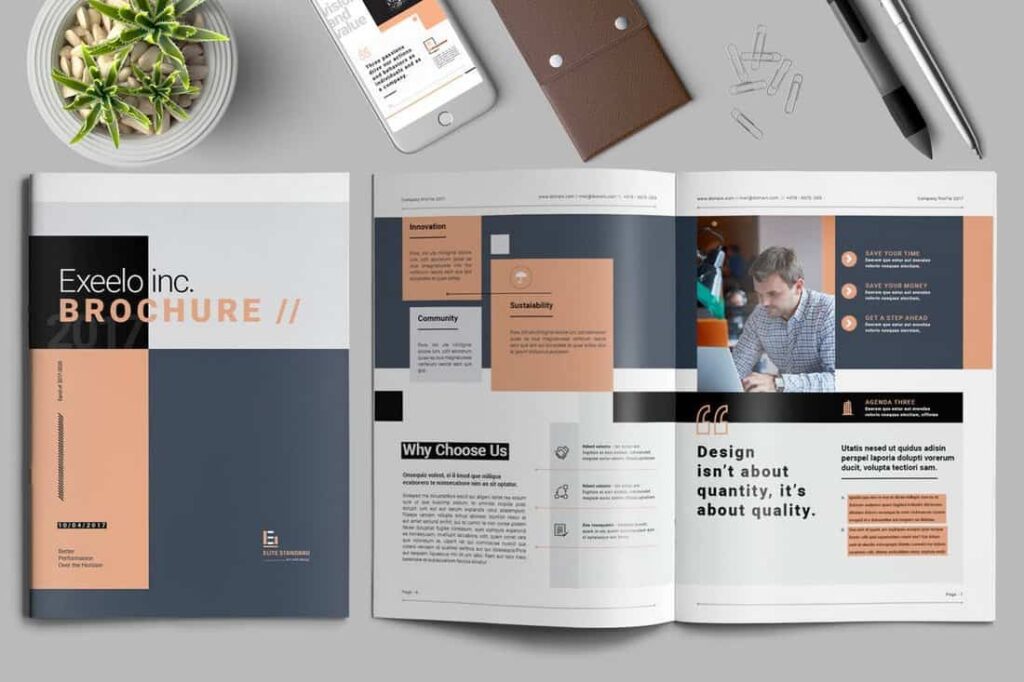
Catalogs can be a perfect solution for your marketing strategy if you sell a range of products. It is a list of products for sale and is usually presented in a booklet that customers can see each page by flipping.
This promo material allows you to display more extensive information than other materials, such as brochures and business cards.
Your catalog should include each product’s image and provide a detailed explanation. Besides, you can make your record more interesting by adding quotes and testimonials next to the products. It’s a great way to convince customers to complete their purchases.
Catalogs are pretty hard to bring them anywhere. But don’t worry about that; you can mail them directly to your customers and business partner to cover this problem.
Another solution you can do is leave them at local businesses around your town or place them at your building reception. Therefore, when people visit your working space or other local businesses, they can easily take and read them. Also, you may hand them out at client meetings to help them have a clear overview of your business.
Let’s take a look at the two catalogs below to get ideas on creating yours:
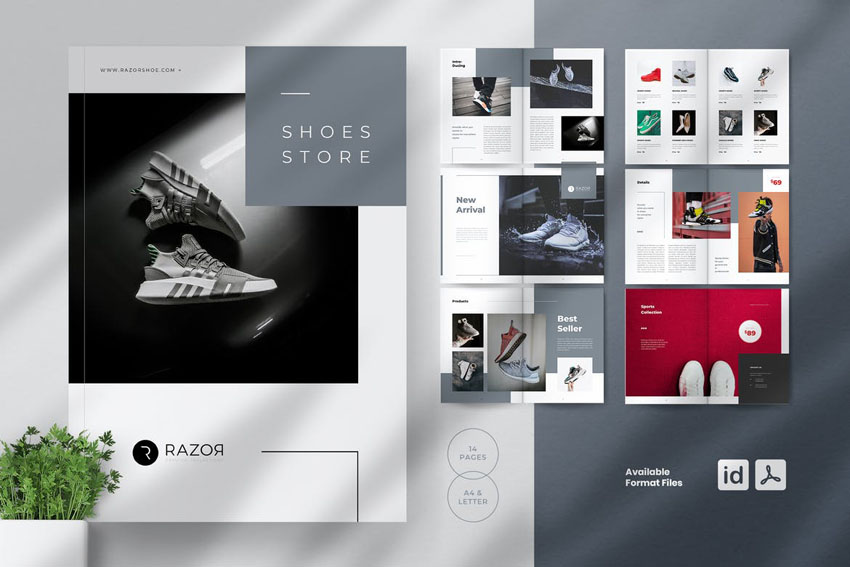
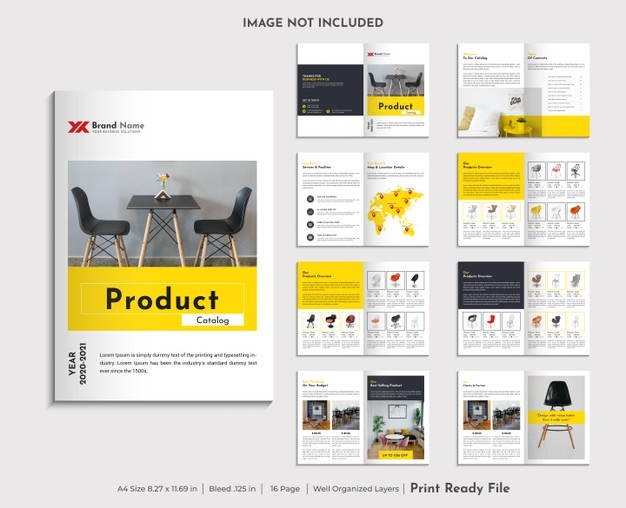
7. Door Hangers
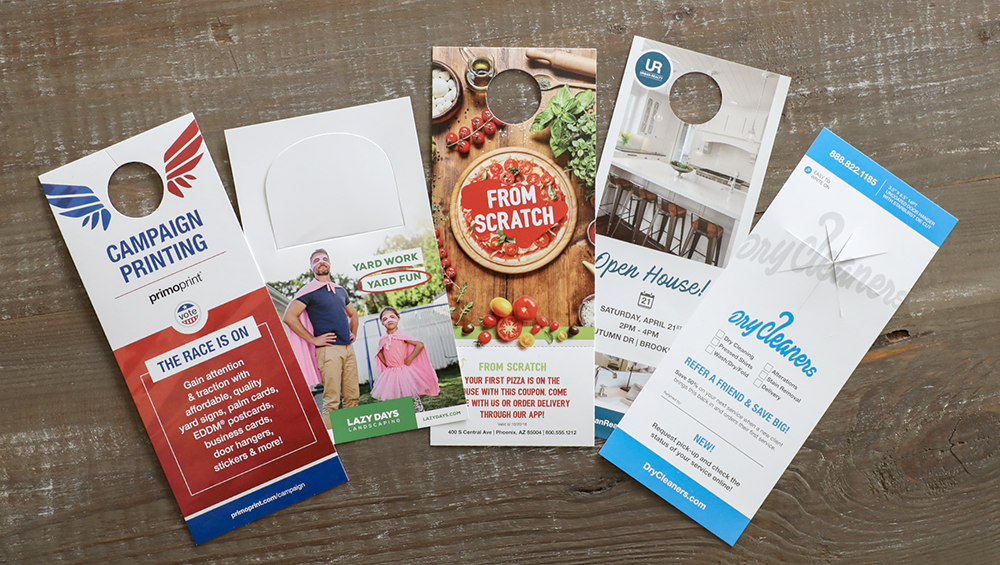
Have you ever seen businesses use door hangers for a marketing campaign? They are cardboard signs with a rectangular shape and a small cutout design to easily fit over door handles.
Its functions are similar to mailers. But instead of sending them through the post office, businesses often hire delivery services to distribute them or place them directly onto customers’ front doors.
Businesses use these items to notify people about new products/services or promotion campaigns. Moreover, hotels often use them to help guests easily communicate with staff. Although their space is not as large as posters or brochures, you can still utilize both sides. You still have enough space to show appealing visuals and the most crucial info people need to know.
In addition, door hangers are more visible than other promo materials because they’re displayed directly in front of people’s houses for everyone to notice.
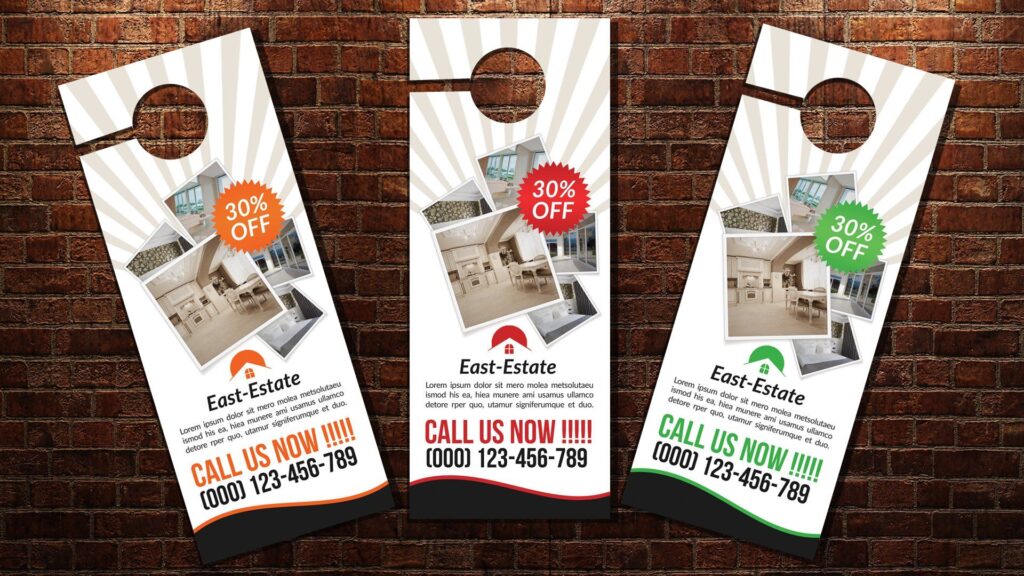
Here is the door hanger of a real estate business. They show a special deal, including call-to-action text, to encourage prospective customers to use their products/services at affordable prices.
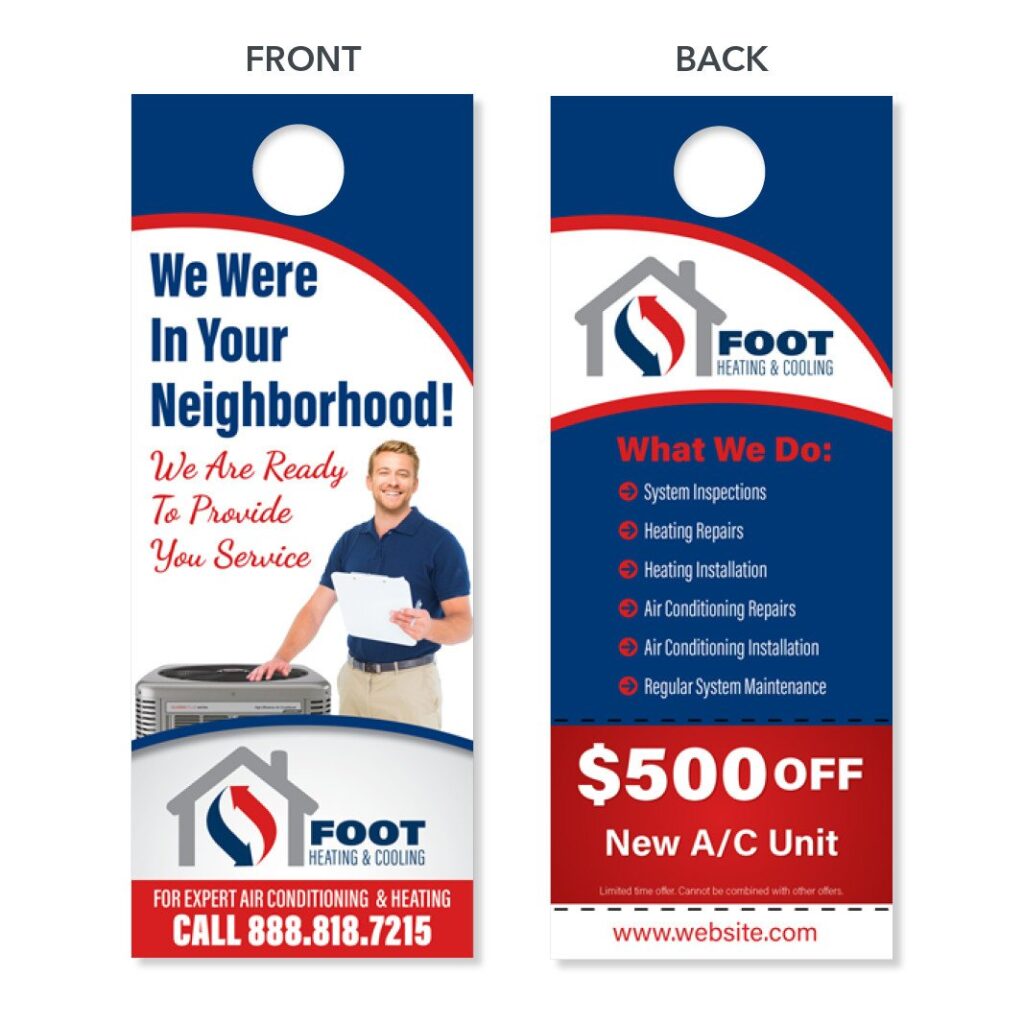
As you can see, the Foot Heating & Cooling business utilizes both sides of the door hanger to spread the word about their services and contact information.
8. Folders
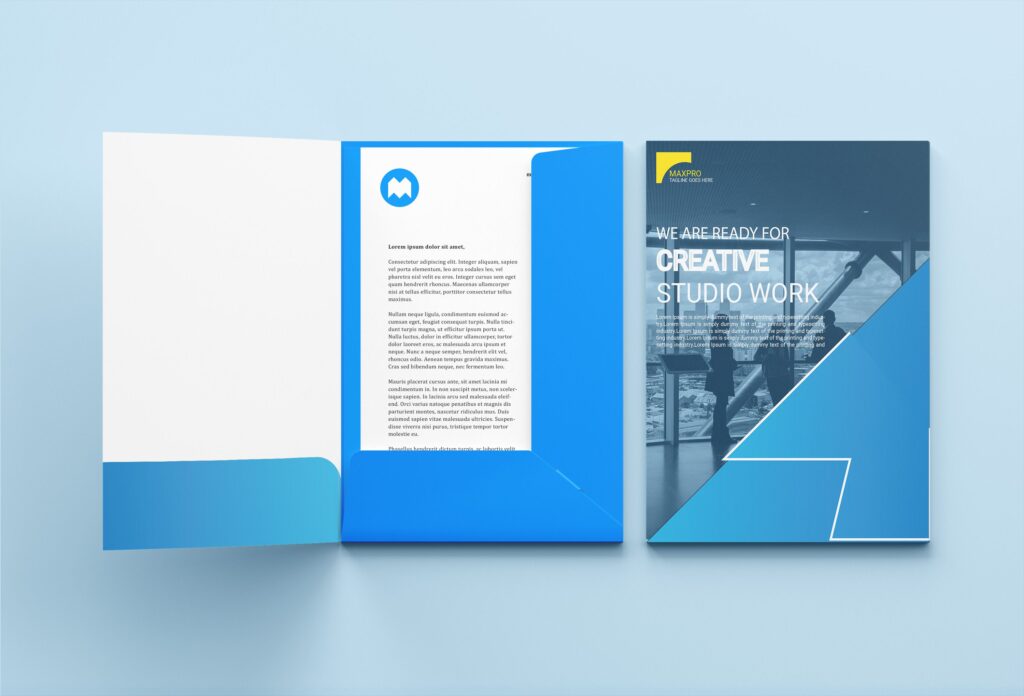
Folders are often used in business presentations that give to potential clients. B2B companies and those interacting with clients in person are the most likely to use these printed materials. Besides, companies use them to contain contracts, quote, or invoices and give them to customers.
They commonly include attractive photos of a product/service and extensive information that clients can consult after a presentation or meeting. As a result, it’s easy for them to remember what you shared.
Folders also allow you to add business cards or other small promo materials to help clients quickly contact you if they demand buying or doing business with you.
On the other hand, these printed materials help you demonstrate your professional image to clients. They’ll appreciate how well-prepared you do for the meeting. Furthermore, it can help them easily recall what you said by referring back to the folder.
You can find ideas to create a folder for your company with the following folder designs:
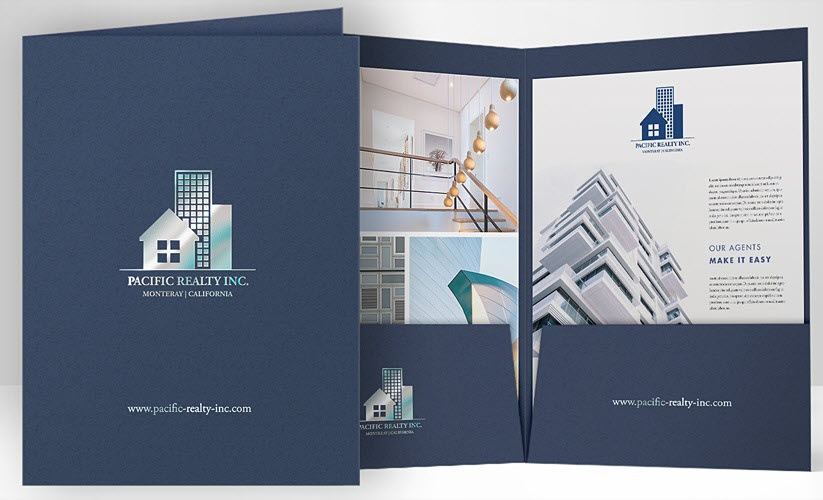
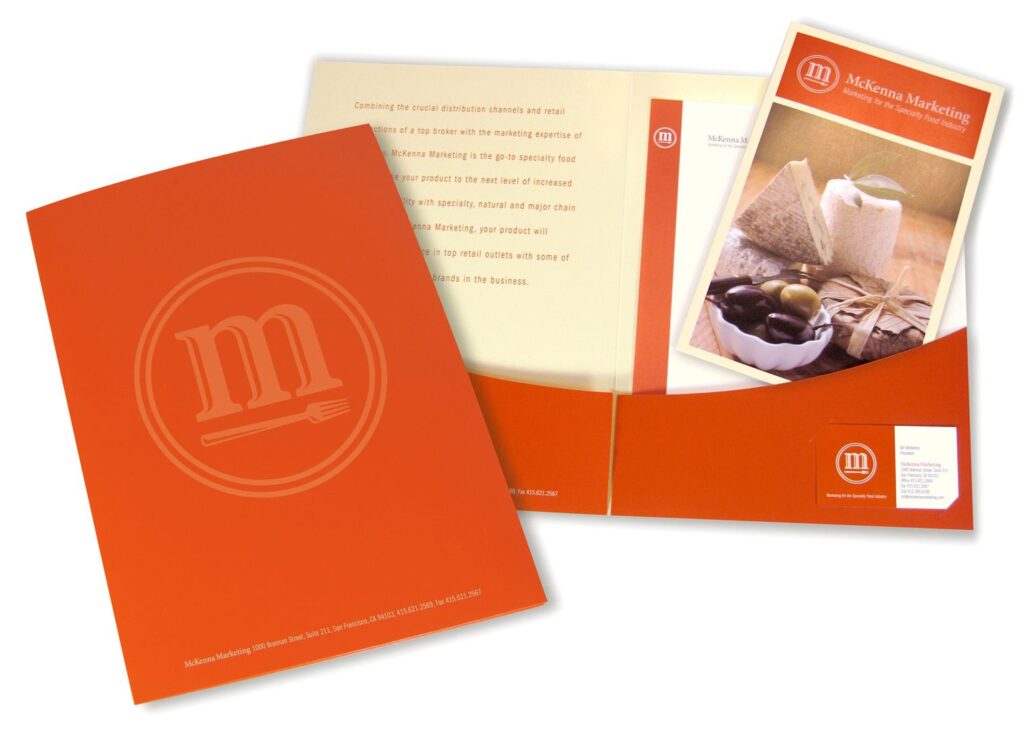
9. Letterhead
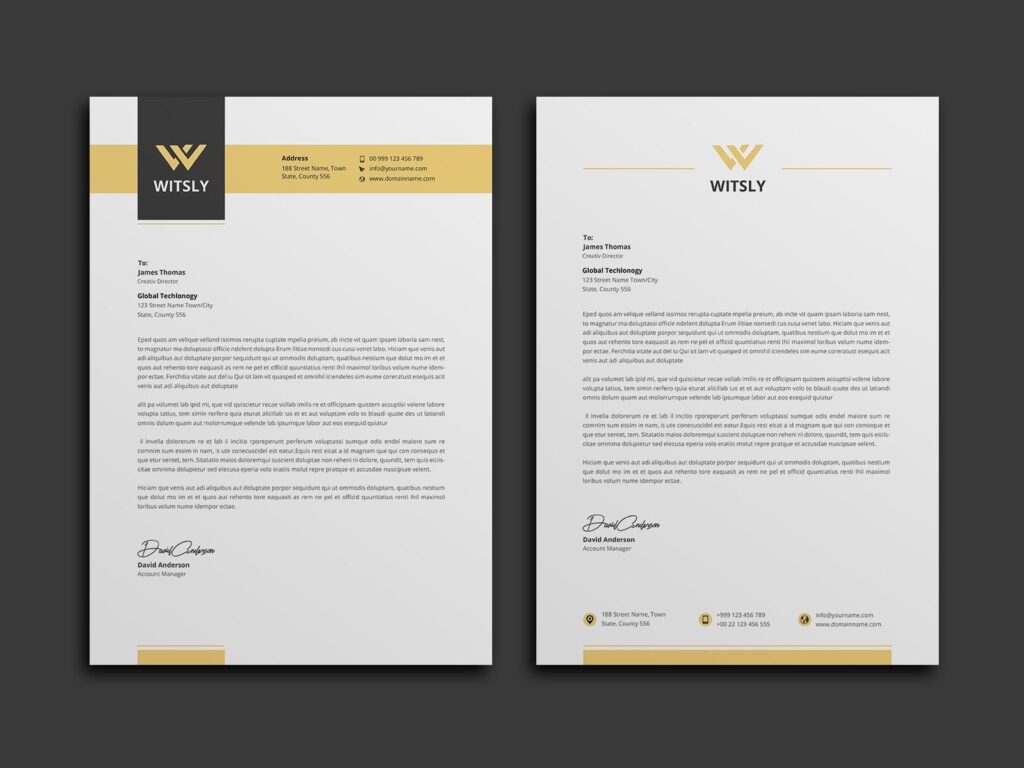
Letterhead is printed marketing material that businesses often use to send personal messages to clients, customers, and others in their field.
To save time, companies usually print a little logo or name, a tagline, and contact information at the top of each letterhead and then use them as a template for future letters. So, they only need to alter the content of each message to meet the needs of specific contacts.
By sending a personal message to customers, your company will appear more professional while giving your audiences a more personal touch.
That’s why although today, digital marketing interactions are preferred because of their convenience, some of your customers may still like a written note.
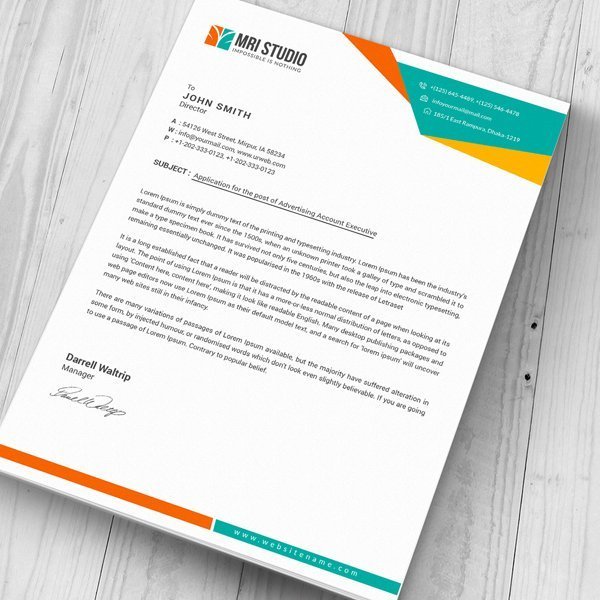
Looking at this example, you can see that they print their logo, address, and contact information at the top of the letterhead and place the website URL at the bottom.
What’s more, you should leave a personal signature when ending the letter to make your letterhead more professional and personalized.
10. Newsletters
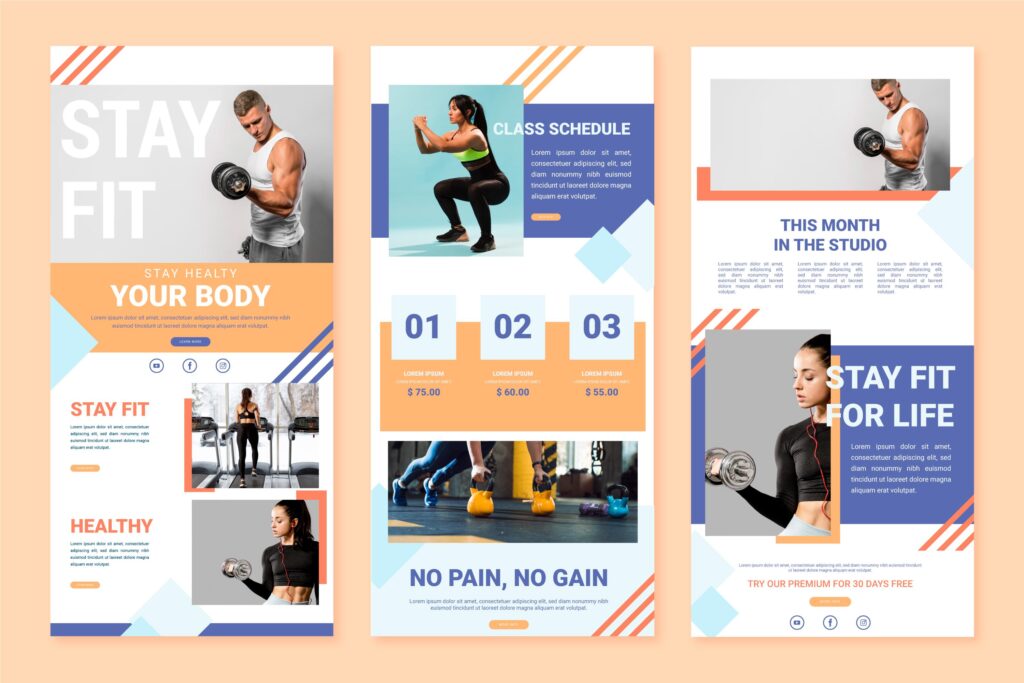
Newsletters are informational packets designed to promote business products/services or provide helpful information to interested people. They usually involve many texts so that you can share detailed information.
You can send newsletters directly to your customer based on your contact list, hand them out at events or meetings, or include them with purchased products. Besides, businesses sometimes utilize newsletters to train or inform staff or others in your industry.
Newsletters let you include a lot of explanations about your products/services. So they can assist you in persuading customers to buy or knowing what makes your organization unique.
Besides, they’re generally best for your existing customers or those people who are familiar with your business.
11. Case Studies
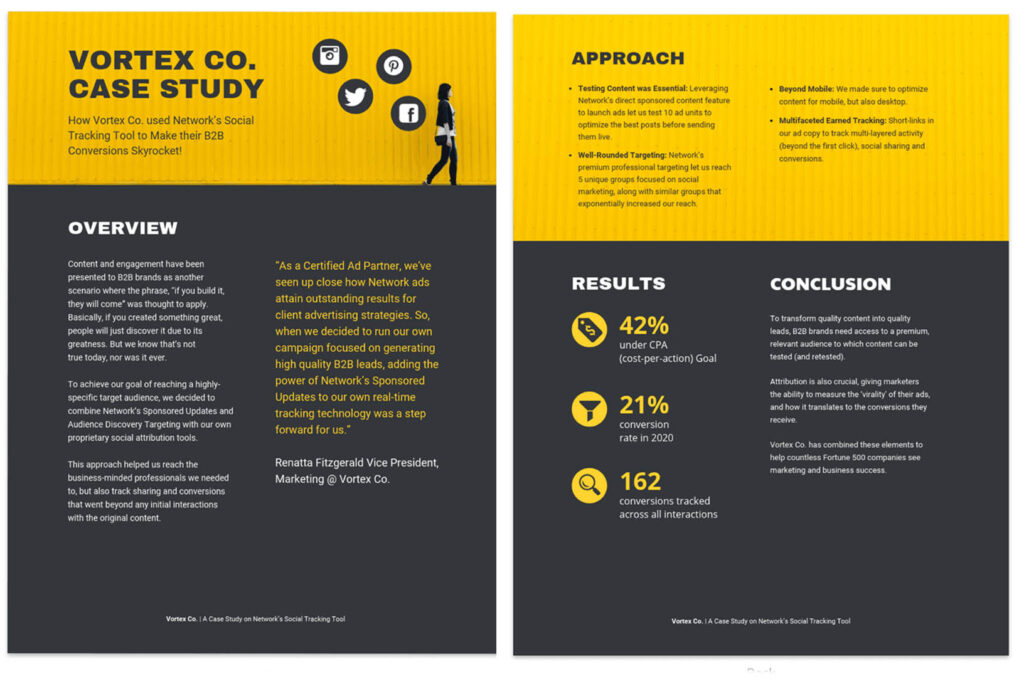
Another marketing material we’d like to mention is a case study. It is a comprehensive way of telling stories about what your company did.
It usually begins with a conflict discussion, explains what happened next, and concludes with how the organization resolved or improved on something.
Your business should provide analysis and statistics to support claims regarding a project’s outcomes and make a complete case study.
The case study is not printed; it’s often published on official business websites or social media. It’s one great way to show your company skills, gain trust and attract people with those factors contributing to your company’s failure or success.
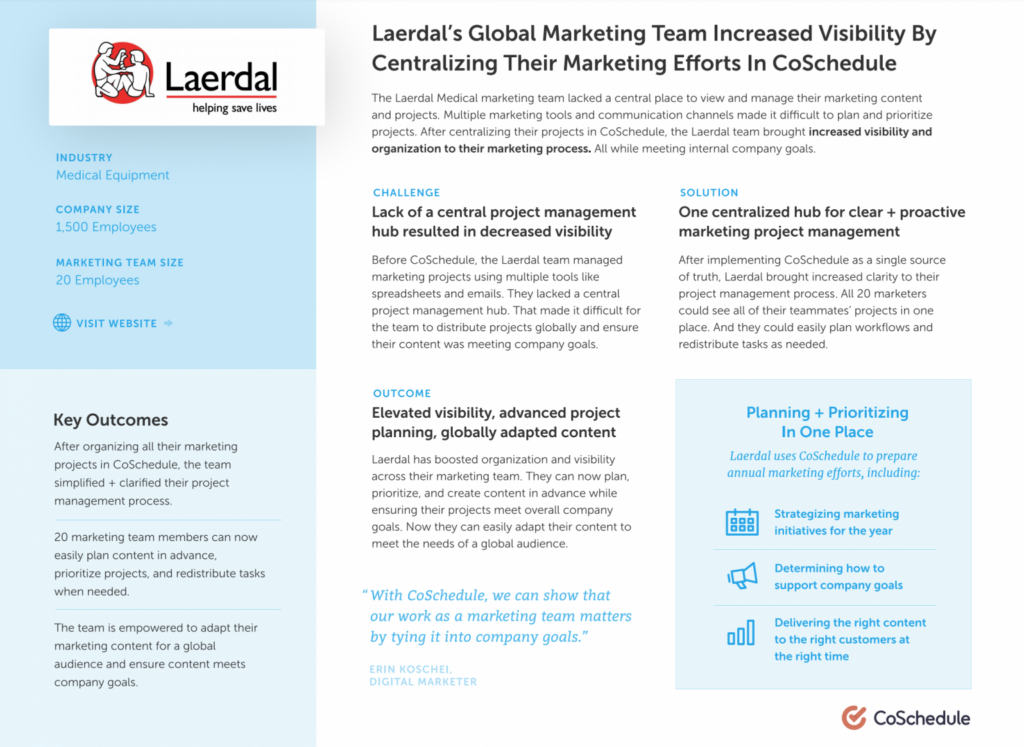
CoShedule developed a case study for Laerdal, a customer whose company focuses on medical equipment and saving lives. This case study example gives detailed information about the problem, solution, and result supported by CoShedule.
Besides, the Laerdal team points out their planning and prioritizing in one place to prepare for an effective marketing plan.
12. Sales Sheets / Product Sheets
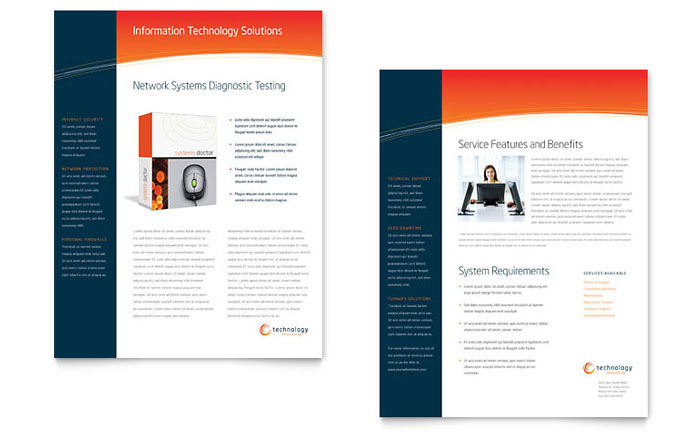
A sales sheet is a one-page document that clearly and concisely explains your product/service details, such as its features, advantages, and price.
It’s simply an advertisement or brochure that should be visually appealing, well-formatted, and persuasively worded, with a clear call to action for potential customers.
Instead of cramping all details on one page, you should provide only important information like the company logo, affordable price, highlight features of your product/service, and even testimonials.
Moreover, your call-to-action button can include a link that navigates customers to your websites. Or you may provide them with the contact information like address and phone number for easy communication. It’s one of the great ways to grab the first impression.
On the other hand, businesses generally distribute this promo material through email, mail, events, or meetings. By providing in-depth information, and interactive, and well-constructed sales sheet, companies can demonstrate products’ strengths and professionalism.
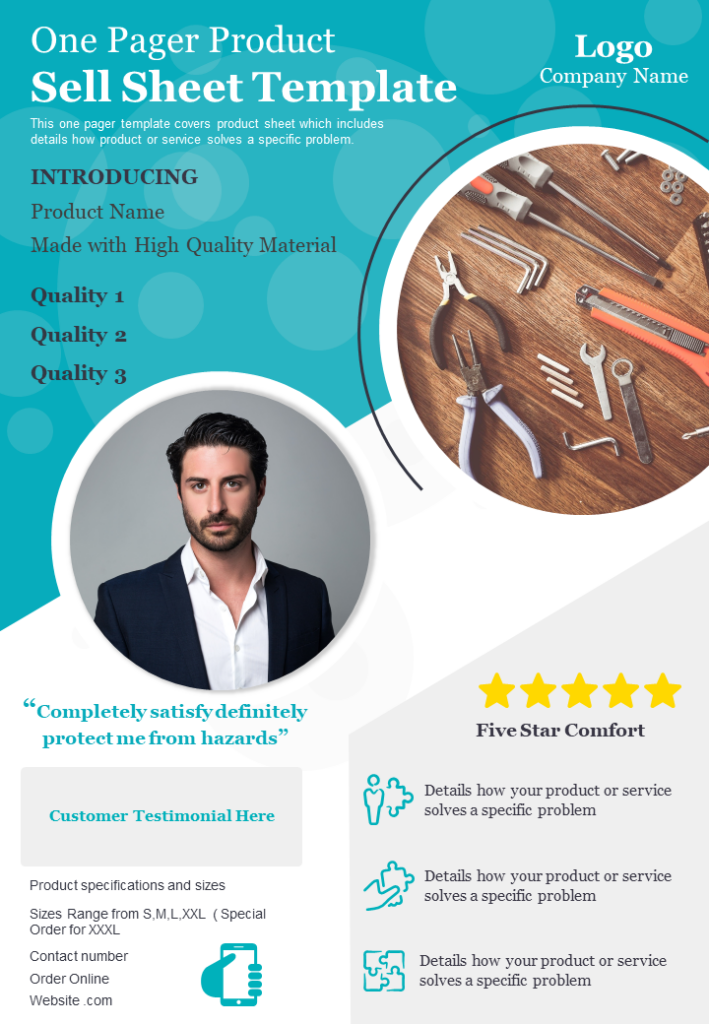
Like this template, you can design your sale sheet by showing customers how your products solve their specific problems, listing some technical specifications, or even adding testimonials to build trust.
13. Testimonials
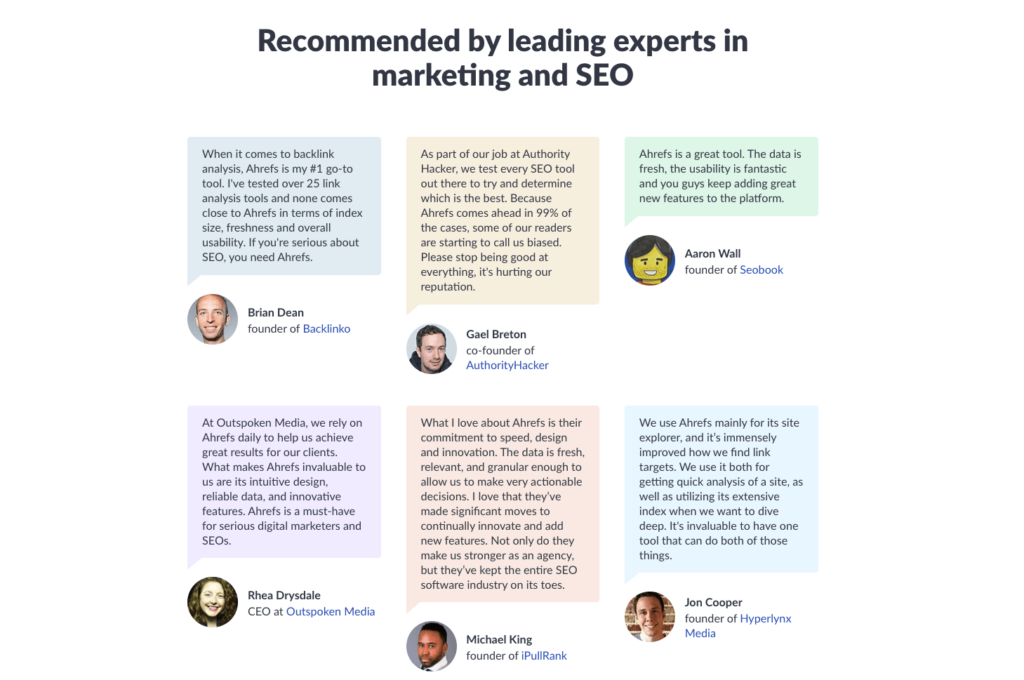
Testimonials are one of the most powerful ways to gain customer trust. They are reviews or recommendations from your clients and customers, showing others how your products/services benefited them.
Customer testimonials are more effective than other promo materials because they spotlight potential customers visiting your website. According to Bigcommerce research, “92% of customers read reviews before buying,” and “72% of consumers say that positive testimonials increase their trust in a business”.
What’s more, additional research found that “88% of consumers say reviews influence their online purchasing decisions”. These statistics demonstrate that having quality testimonials pages can help businesses increase conversion rates and improve brand image.
You can use some kinds of testimonials when creating their pages, such as video, quote, peer, social, influencer, interview, and success stories testimonials.
14. Slide Deck
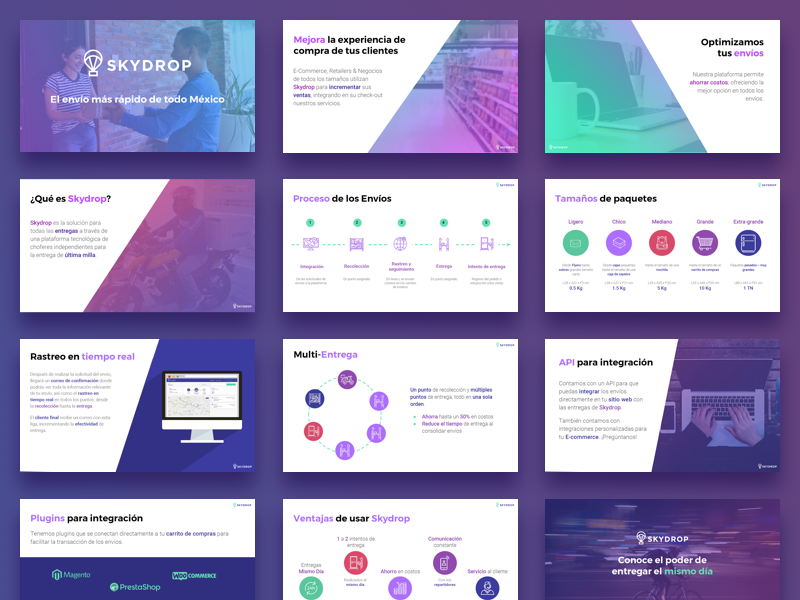
A slide deck is simply a grouping of slides used in a presentation at meetings or events. The term “slide deck” is also called “presentation,” They are often used interchangeably. Each slide includes a critical component of the overall topic.
This marketing material is used for many purposes, like telling stories, introducing new products, developing marketing plans, summarizing their outcomes in a year, and more.
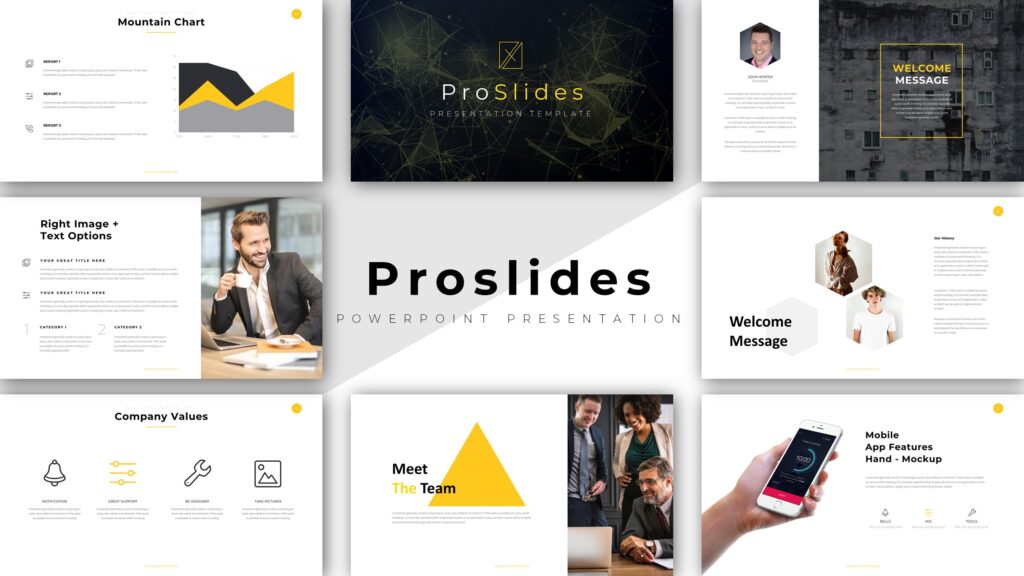
When creating it, businesses can add text along with images and videos in the slide deck to make the presentation more engaging and visual. So everyone who joins it can clearly understand your brand’s identity, your goals, and your product’s capabilities.
15. Flyers
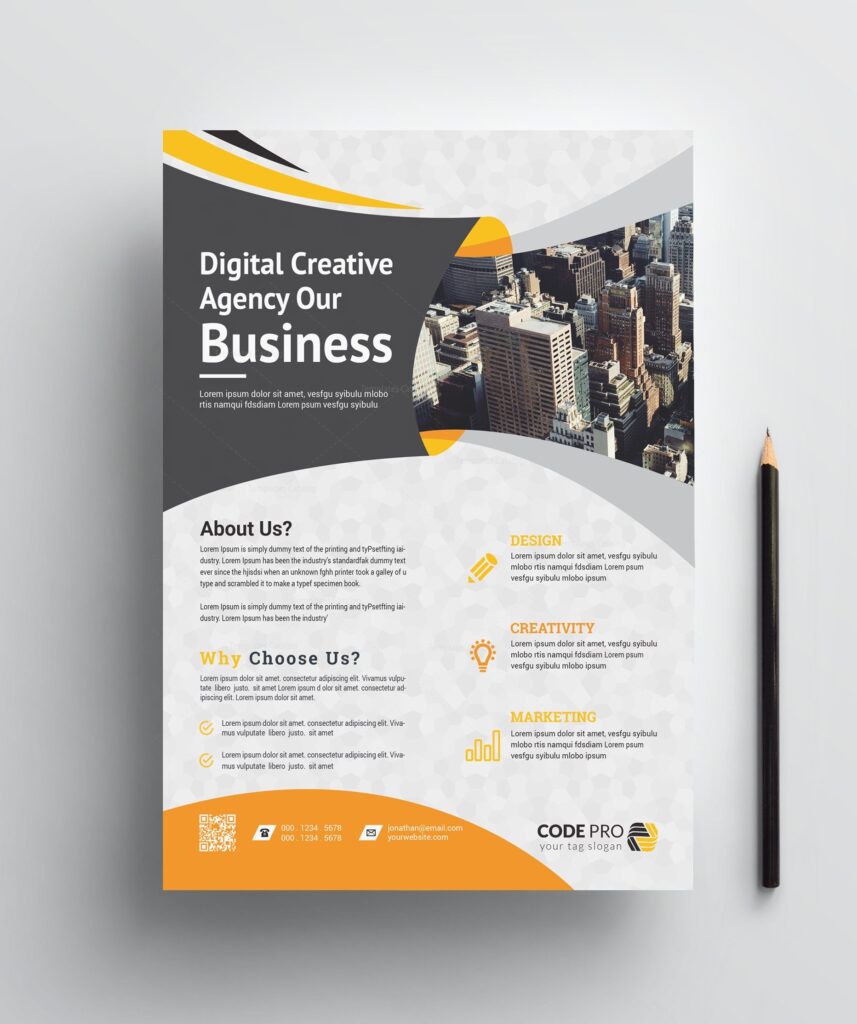
Flyers may seem like outdated marketing materials, but they still have a lot of value in ads. They are commonly posters or single sheets distributed freely in public places such as streets, buildings, schools, entertainment areas, etc.
This printed sheet includes a short and simple message that everyone can understand. They often advertise business promotions, and events, or recruit new employees. Your brand can use this promo material to attract new potential customers to your recent sales.
On the other hand, Flyers are best suited for start-up businesses because their cost is relatively low, easy to make, and only printed on one side. Thus, companies can release a wide range of flyers just for one campaign to appeal to different prospective customers in their niche.
What’s more, you are flexible in using them. You can hand them out online or in person, etc.
Further, a good flyer should have your logo or company name, a big headline with bright color, short sentences to express the main purpose, appealing images, and call-to-action messages.
Here are some flyers templates you can learn:
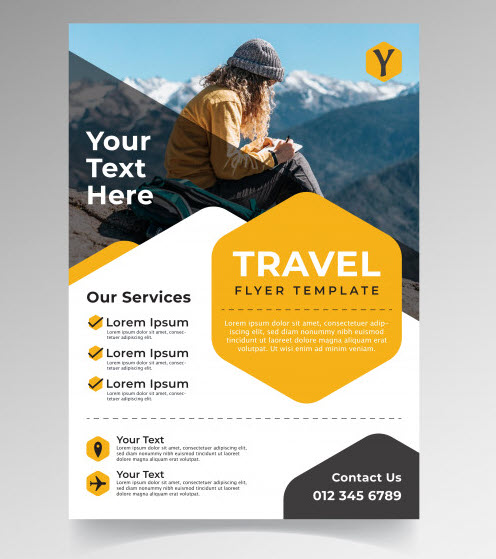
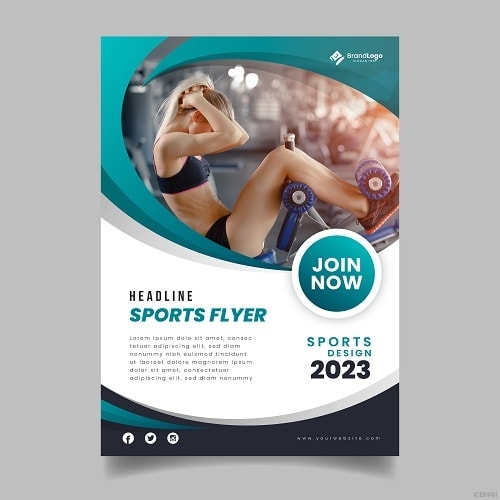
16. Postcards
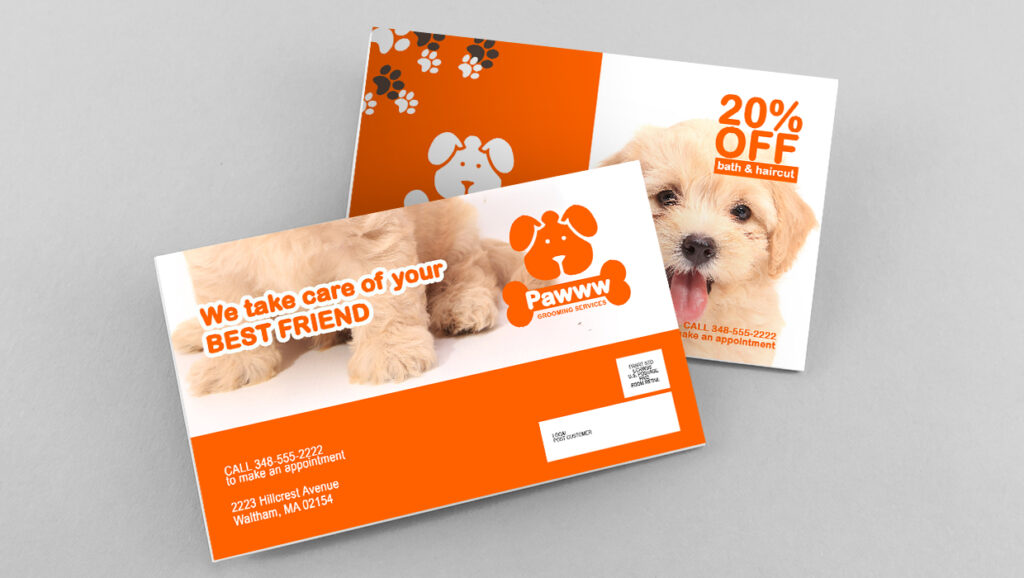
A postcard is a form of direct mail that can reach a specific demographic with printed coupons, announcements, or other deals.
It’s a low-cost, fast turnaround, and flexible direct mail tool. Businesses use postcards to generate leads, raise return connections, and inform new products/services. For example, you can send abandoned cart postcards to urge those who leave items in the cart for more than 24 hours to purchase.
You may think that almost all people ignore or throw postcards, but 86% of consumers take time to read emails. So that’s a good chance for you to reach out to new and existing customers.
In addition, the influence of an unintentional glance plays an essential role in branding. The postcard is also visible when it is left on the recipient’s desk or counter. So that people may glance at the card when they come to these places.

Typically, the postcard has limited space, so you should place your main content right on the headline to make it immediately catch the reader’s eye.
For instance, the above postcard example put their special offer on the headline and used a different color to highlight the “30% OFF” message. Hence, it is easy to draw people’s attention, and they will instantly know what your brand is offering.
This postcard also leaves contact information for those people who are interested.
17. Thank You Cards
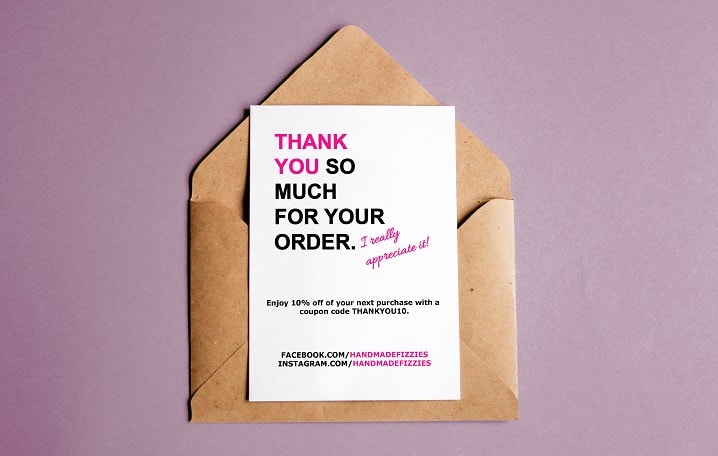
Thank you cards are a marketing idea to show your customers how much you appreciate them when you can’t thank them directly.
By expressing gratitude through this card, customers will feel cared for, happy, and satisfied. Therefore, it’s an excellent way to increase customer trust and brand image.
Businesses can use this type of marketing material in multiple cases. For example, you can attach a thank you card with a package for VIP customers to thank them for always trusting and using your products when they buy products.
It’s also good when you do the same thing for first-time purchasing customers. That helps to improve your professionalism and show them how your customer service is good.
The difference between these thanks you cards is that you can provide VIP customers with a coupon for their next purchases instead of saying thank you only.
18. Loyalty Cards
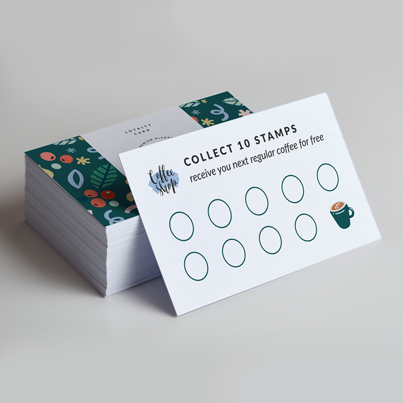
Besides thank-you cards, businesses usually use loyalty cards to encourage repeat business, especially for new customers.
It depends on each company; the loyalty card will have several holes. Customers will get a hole punched in it for every purchase they make. They’ll get a special deal when they collect enough specific spots that the business requires. It is an excellent way to encourage customers to repeatedly return to your business to get special offers.
Furthermore, loyalty cards are particularly advantageous to companies. They only provide customers with rewards after spending a certain amount of money.
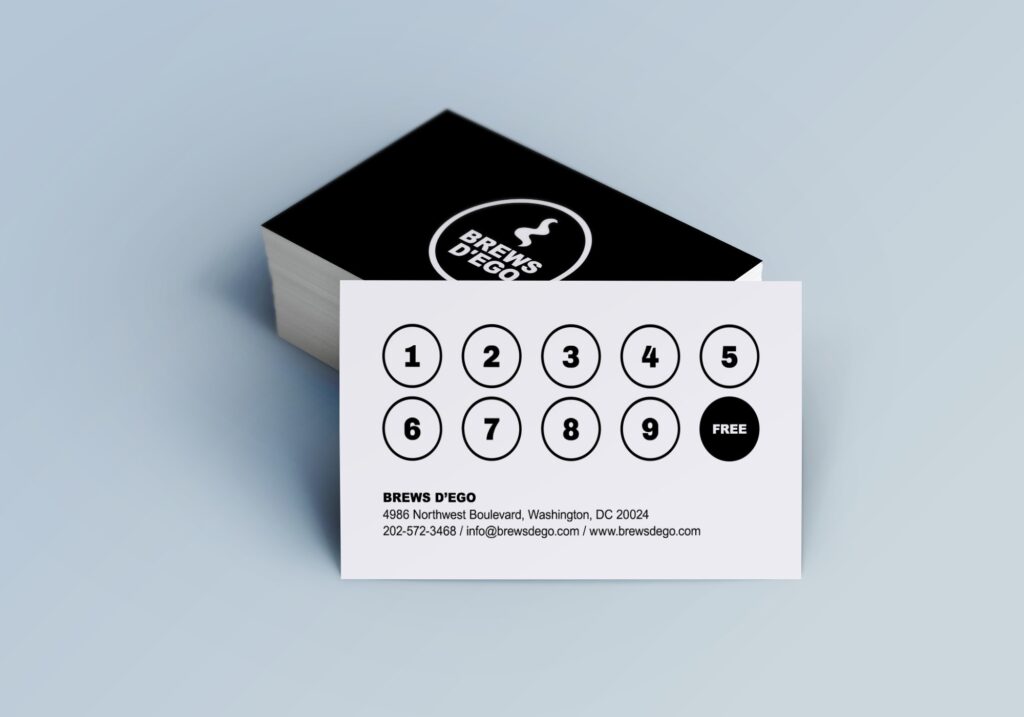
Looking at this loyalty card example, when customers buy 9 Brews D’ego’s products, they’ll get the 10th for free.
On the other hand, instead of using paper cards only, your business can use digital cards for convenience. So customers can quickly accumulate points through mobile without carrying a paper card.
In Short
These are the 15+ promo materials we think they’re beneficial for increasing your business value. Each material will have its own strengths and is suitable for different situations. We hope that you can use them effectively for your marketing plan.
Leave comments below if you know of other marketing materials we haven’t listed yet. And don’t forget to update our blog because we will be back with more valuable topics.

Try FREE Magento Page Builder demo today
Looking for a Magento 2 page builder that helps you create any beautiful eCommerce page layout with no coding required?
Magezon Page Builder can help!
 Magezon Blog Help Merchants Build Comprehensive eCommerce Websites
Magezon Blog Help Merchants Build Comprehensive eCommerce Websites

